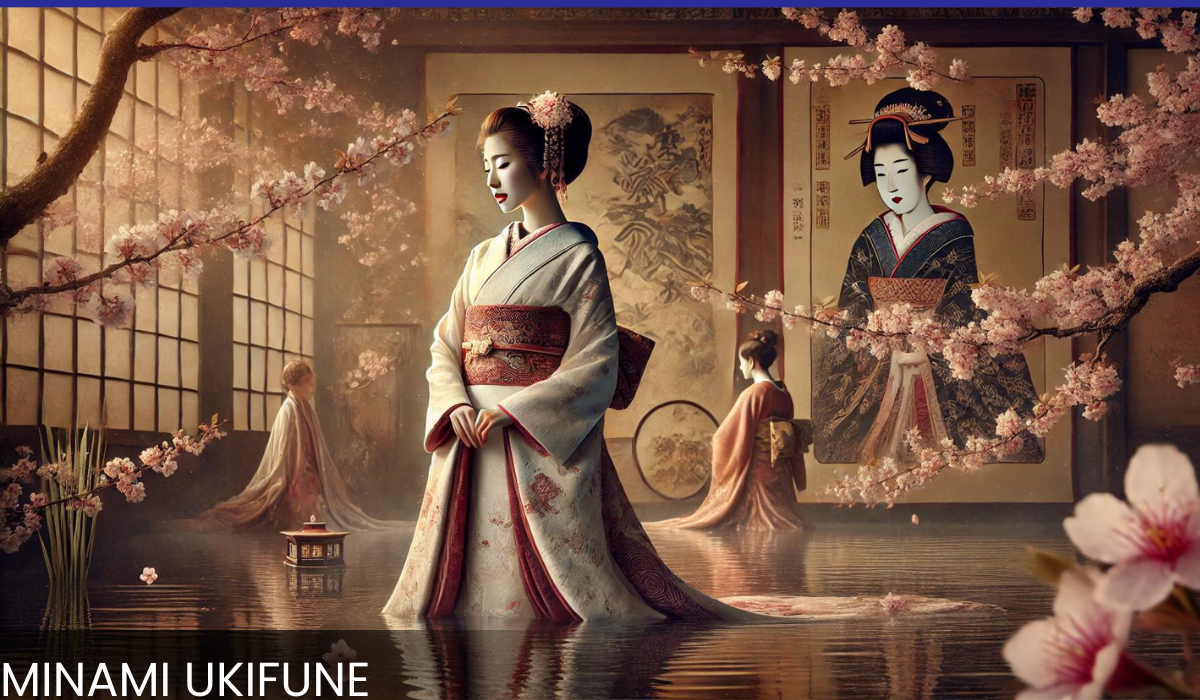The Enduring Legacy of Minami Ukifune
Minami Ukifune has long been a symbol of cultural intensity and thriller in Japanese heritage. Her presence in each artwork and literature continues to captivate human beings, making her a timeless figure. In this text, we’ll discover the lifestyles, impact, and enduring legacy of Minami Ukifune and the way she represents a vital bankruptcy in Japan’s wealthy history. From her origins to her continued impact on cutting-edge lifestyle, there may be much to uncover about this enigmatic person.
The Origins of Minami Ukifune
Where Her Story Began
Ukifune Minami’s story is deeply rooted in the classical era of Japan. She first emerged in the Heian period, a time noted for its flourishing artwork and literature. This period was characterized by a focus on courtly life and the tricky relationships within it. The historical and literary context in which she became a considerable figure is crucial to understanding her lasting impact.
Ukifune Minami is believed to have originated from folklore and fable, steadily becoming part of greater formal literature over time. Her man or woman was shaped significantly by the cultural narratives that circulated in Heian Japan. These stories regularly revolved around the subjects of affection, responsibility, and personal sacrifice, which might come to define Ukifune’s narrative.
The myths and memories that contributed to her man or woman’s creation talk of a lady caught in the complexities of court lifestyles, navigating love and tragedy with a grace that could endear her to Japanese subculture for generations. Her story began to take shape in people’s minds, laying the basis for her later appearances in classical literature.
Minami Ukifune in Japanese Literature
Her Role in The Tale of Genji
One of the reasons Minami Ukifune remains a well-known discern is her vital function within the traditional Japanese literary painting, The Tale of Genji. Written using Murasaki Shikibu, this epic novel is regularly regarded as the arena’s first novel and a top of Japanese literature. Ukifune’s individual is essential to the latter chapters of the story, where her tale of love, fate, and tragedy unfolds.
Ukifune’s literary significance lies in her embodiment of the complicated emotional landscapes that The Tale of Genji seeks to paint. Her reports reflect the wider issues of the radical, which include the fleeting nature of life and the often painful consequences of love and desire. Her tale is a poignant exploration of human emotion, making her an unforgettable part of the Japanese literary subculture.
Her narrative draws readers into a world where personal tragedy and societal expectations collide. Ukifune’s lifestyle is marked by her struggles with love and identification, themes that resonate deeply within the historical and modern Japanese.
Ukifune Minami as a Cultural Icon
Beyond Literature
Beyond literature, Ukifune Minami has become an enormous cultural icon in Japan. Her impact extends into various styles of artwork, theatre, and popular culture, wherein she is widely known as a symbol of enduring splendour and beauty. Traditional Japanese artwork regularly depicts her in scenes from The Tale of Genji, capturing the beauty and despair that outline her person.
In theatre, especially in Noh and Kabuki, Ukifune’s story has been adapted several times, each rendition adding layers to her rich narrative. These performances spotlight her emotional depth and the cultural values she represents, bringing her story to existence for audiences across generations.
Modern interpretations of her man or woman can be seen in numerous media, from films to anime, wherein she is reimagined for modern audiences. Her photo has developed, yet she maintains to maintain cultural significance, symbolizing undying subject matters of human enjoyment and emotional complexity.
Themes and Symbolism in Minami Ukifune’s Story
Deep Cultural Significance
Minami Ukifune’s tale is rich with issues and symbolism, making her a subject of persistent fascination. Her narrative revolves around destiny, love, tragedy, and the opportunity of redemption. These topics are woven into her character’s reports, reflecting broader cultural values and human truths.
The symbolism in her tale is profound. Ukifune represents the inevitability of fate and the frequently harsh realities of existence and love. Her trials and tribulations signify the consistent conflict between non-public dreams and societal expectancies. This theme resonates deeply in the Japanese way of life.
These topics are not best relevant to ancient Japanese society but hold to locate that means inside the cutting-edge global. Ukifune’s story reflects the human circumstance, exploring the depths of emotion and the complexities of our interactions with others.
Modern Relevance of Minami Ukifune’s Legacy
Contemporary Influence
Explore how Minami Ukifune’s legacy continues to inspire and impact current Japanese tradition. From modern art to film and literature, discuss how her man or woman has been reinterpreted and how her story is based in today’s context.
In cutting-edge adaptations, Ukifune’s story regularly explores modern-day troubles, presenting a bridge between the past and present. Her character has been tailored for present-day audiences, preserving her core themes while making her tale reachable and applicable to the modern-day cultural landscape.
The persistent relevance of Minami Ukifune in contemporary Japanese tradition speaks to the timeless nature of her narrative. She stays an effective symbol of emotional intensity and human resilience, inspiring new generations to discover the rich history she represents.
Feminine Identity and Minami Ukifune
Reflection of Women’s Roles
Minami Ukifune’s story can be explored through the lens of female identity in Japan. Her stories reflect the demanding situations and roles of girls throughout Japanese records, particularly in terms of affection, duty, and private sacrifice. Her person gives a mirror to the societal expectations positioned on girls and the personal struggles they face.
In Japanese literature, Ukifune represents the complexities of feminine identity. Her man or woman mirrors the roles of ladies in historic Japan, highlighting the stability between non-public dreams and societal duties. This exploration offers insights into the ancient and cultural context of girls’ lives in Japan.
Modern views on feminine identity continue to find relevance in Ukifune’s tale. Her narrative resonates with current discussions on gender roles and the evolving expectancies of girls in society. By inspecting her story, we gain a deeper understanding of the long-lasting topics of feminine identification and private organization.
The Timeless Legacy of Minami Ukifune
Reflecting on Her Impact
Summarize the key points discussed within the article, emphasizing how Minami Ukifune has left a lasting effect on the Japanese subculture. Reflect on her significance as a literary individual and cultural icon and her persevered relevance.
Minami Ukifune’s story is a testament to the iconic energy of literature and cultural narratives. Her legacy continues to captivate and encourage, offering insights into the complexities of human emotion and societal expectations. As a man or woman, she embodies issues that can be both timeless and universal, making her an essential part of Japanese history.
Her significance extends beyond the pages of The Tale of Genji, influencing artwork, theater, and modern-day media. Ukifune remains a powerful symbol of love, fate, and tragedy, resonating with audiences throughout generations. Her tale is a reflection of the human experience, presenting a window into the wealthy cultural fabric of Japan.
For those interested in exploring Minami Ukifune and her impact on Japanese subculture in greater detail, consider engaging with literary works, artistic representations, and scholarly discussions that celebrate her legacy.

